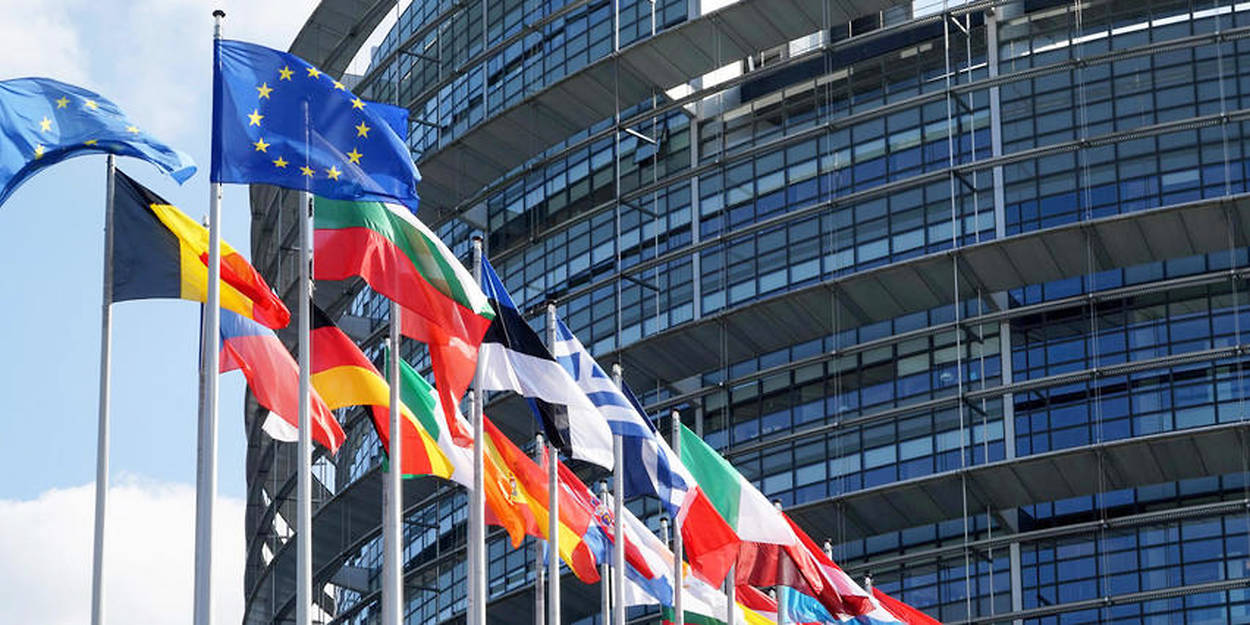Ukraine has long been known for its robust railway network. Thousands of kilometres of tracks stretch from the Carpathians to the Black Sea steppes, supporting logistics for everyone—from farmers to metallurgical giants exporting their products abroad.
And now, amid the ongoing war, every Ukrainian railcar has become even more critical, and the government’s role is to ensure that domestic resources are not wasted, idled, or devalued by competition from foreign assets.
That is why Ukrzaliznytsia—the national railway operator responsible for most of the country’s freight and passenger transport—recently imposed a ban on the use of foreign-registered wagons for domestic transportation.
In other words, if a Ukrainian shipper needs to deliver goods to a Ukrainian recipient, they must now use rolling stock owned by a Ukrainian operator.
The rationale behind the decision isn’t just about politics or security. It’s based on basic economic logic. Ukrzaliznytsia, as the largest rolling stock owner in the country, is seeking—firstly—to protect itself, and secondly, to support domestic private operators.
The argument is simple: if there is an oversupply of wagons in Ukraine, is it reasonable to give transportation work to foreign-owned rolling stock?
Valeriy Tkachov, Deputy Director of the Department of Transportation Technology and Commercial Operations at Ukrzaliznytsia, cites concrete numbers: as of late February 2025, 3,420 Ukrainian wagons were idle, with another 87 en route to storage stations. This is not a temporary phenomenon but a systemic issue pointing to a saturated market. Moreover, 53% of the tracks allocated for this major infrastructure project are already occupied.
Put simply, every foreign wagon entering Ukraine means one more Ukrainian wagon potentially sitting idle. That’s why the restriction appears entirely justified under current conditions.
Naturally, the decision sparked mixed reactions. Some viewed it as long-awaited support for Ukraine’s railcar manufacturing industry, while others warned of excessive protectionism and potential risks for businesses. Some even sarcastically called it a self-imposed “iron curtain.” But the situation is more complex than it may seem at first glance.
Why I believe Ukraine should protect its rolling stock
Over the past few years, Ukrainian companies have invested in building their own facilities and purchasing new wagons. At the same time, other enterprises have become accustomed to simply leasing imported equipment, often due to lower tariffs or simplified conditions.
Now the government is setting new rules: domestic needs must be met by domestic assets. This, of course, disappoints those who are tied to long-term contracts with foreign leasing companies or are used to cheaper foreign services. And yet the logic is sound – if there are enough domestic resources, it makes more sense to support local manufacturers and owners.

For a long time, the use of foreign-registered wagons in Ukraine remained poorly regulated. Officially, they were allowed only for international transportation – import and export. But in practice, they sometimes operated on domestic routes due to regulatory gaps, limited oversight, or convenience for certain players.
A recently introduced convention is designed to fix this and restore order. The basic idea is simple: wagons registered abroad should only cross borders, and not run within the country.
Ukrzaliznytsia notes that there is no longer a real need for foreign assets in domestic logistics. First, more than 21,500 Russian and Belarusian wagons have been withdrawn from the market. Second, Ukrainian companies have made significant investments — often through loans — in the acquisition and modernization of their own rolling stock.
The current surplus of wagons in Ukraine is not a coincidence, but the result of broader economic trends. Everything is interconnected: fewer goods to deliver means less demand for rolling stock. And here the numbers speak for themselves.
Let’s take the recent dynamics as an example. In January-February 2025, 26.28 million tons of cargo were transported by rail in Ukraine, which is 2.4 million tons, or 8.4%, less than in the corresponding period of 2024.
The sharpest drop occurred in February: deliveries fell by 2.27 million tons compared to the same period last year, or by 15.6%. For a broader perspective: this is equivalent to approximately 35,000 fully loaded wagons, assuming an average carrying capacity of 65 tons each.
Against this background, the primary question becomes more acute: whose fleet should operate when demand is limited? Unregulated access to the Ukrainian wagon market from countries such as Uzbekistan, Georgia, Estonia, Lithuania, Kazakhstan, Russia, Tajikistan, Latvia, Belarus, Moldova, Kyrgyzstan, Turkmenistan, Azerbaijan or the South Caucasus Railway does not create a fair competitive market.

Instead, it becomes a mechanism that displaces Ukrainian wagons. As a result, those who invested in new cars or modernization — often with borrowed money — may lose the opportunity to recoup these investments.
Ukrzaliznytsia has clearly stated this position. At a recent online meeting with the agricultural sector, Deputy Director Valeriy Tkachov said: “When rolling stock owned by another country is working, and meanwhile Ukrainian wagons—new, purchased on credit—are idle, that’s just not right.”
Rolling Stock Availability Affects the Nation’s Security and Wellbeing
To someone not involved in the production or maintenance of railcars, the scale of the industry may be easy to underestimate. But wagon manufacturing is an enormous ecosystem—from massive factory halls where wagons are assembled and painted, to smaller enterprises that produce parts and components: wheelsets, brake systems, fasteners, and more.
Repair services are another vital link in this chain. These specialists work in dedicated depots, restoring damaged wagons, conducting maintenance, and carrying out modernizations. A decline in freight volumes or the displacement of Ukrainian rolling stock by foreign fleets hits this sector immediately.

Lower revenues for Ukrainian manufacturers, suppliers, and repair shops also mean lower tax revenues for the state budget.
That, in turn, reduces resources for supporting Ukraine’s Armed Forces, building bomb shelters, or helping frontline communities.
The loss of orders and workload puts jobs at risk, worsening an already strained socio-economic situation.
In short, if Ukrainian wagons sit idle, the country loses momentum. A small dip in economic activity can weaken the nation. Especially now, when every resource is vital for survival.
Every hryvnia kept inside Ukrainian industry matters more than ever. Profits from leasing foreign wagons simply drain abroad—weakening the economy and undermining defense efforts.
Let’s not forget: some of the same countries whose wagons enter Ukraine already impose restrictions on Ukrainian operators. The new ban is, in part, a reciprocal measure.
Why the Ban Has Its Critics
The European Business Association (EBA) responded critically to Ukrzaliznytsia’s decision, labeling it as “excessive protectionism.” The EBA raised concerns that some companies would lose quick access to cheaper foreign wagons, potentially leading to shipment delays, rising logistics costs, and even contract breaches.
Yet many economists and industry experts argue that wartime realities shift national priorities.
I often compare this to a household facing financial hardship. In such a situation, everyone tries to protect the family budget rather than spend money supporting the neighbors. This ban is a tool for safeguarding domestic industry and jobs.
Wagon Manufacturing: A Sector That Has Endured Many Storms
Ukraine is home to factories with decades of experience in building and repairing railcars, some dating back to Soviet times. In recent years, as many companies opted for cheaper imports, these facilities were left underutilized.

Now, as Ukraine attempts to revive national production, continuing to allow an influx of foreign wagons into the domestic market would be counterproductive.
Not all foreign operators offer better quality or conditions—and given the geopolitical situation, the origin of some wagons raises serious concerns.
In wartime, control over the national rail fleet is not just an economic issue—it’s one of national security.
Openness or Isolation: Which Path Will Ukraine Choose Post-War?
Some analysts believe that once the war ends and infrastructure reconstruction begins, Ukraine’s market may reopen more broadly to foreign rolling stock. However, this scenario would still rely on the principle of reciprocity. Most countries protect their own strategic industries—including rail.
The key question is how quickly Ukraine can rebuild its economic capacity, modernize its manufacturing, and attract investment in railcar production. For now, Ukrzaliznytsia remains firmly committed to prioritizing national rolling stock for domestic routes—citing both economic and security arguments.
Under current circumstances, this decision protects the market and supports our enterprises. Strategically, it’s about preserving and growing a vital industrial sector—railcar manufacturing—which sustains thousands of Ukrainian families and contributes to national resilience.
At the same time, Ukraine must avoid isolating itself. The goal is to strike a balance between protecting national interests and cooperating constructively with international partners. Because true resilience isn’t just about armour—it’s also about adaptability and the ability to thrive in a globalised world.
Alona Lebedieva is a graduate of the Kyiv Institute of International Relations, and holds a Master’s degree in international economics She is the owner and Head of Supervisory Board at “Aurum Group” Ukraine, and also a Human Rights advocate, and an occasional contributor to EUBriefs.



